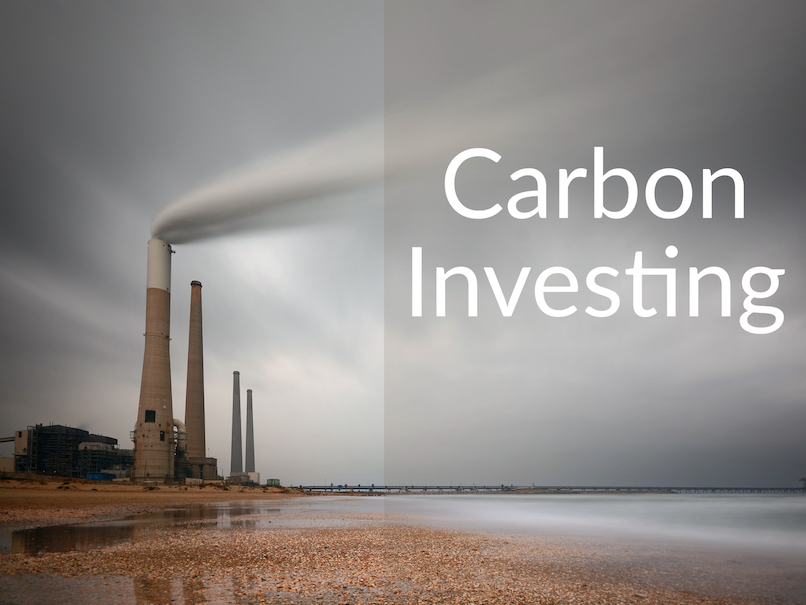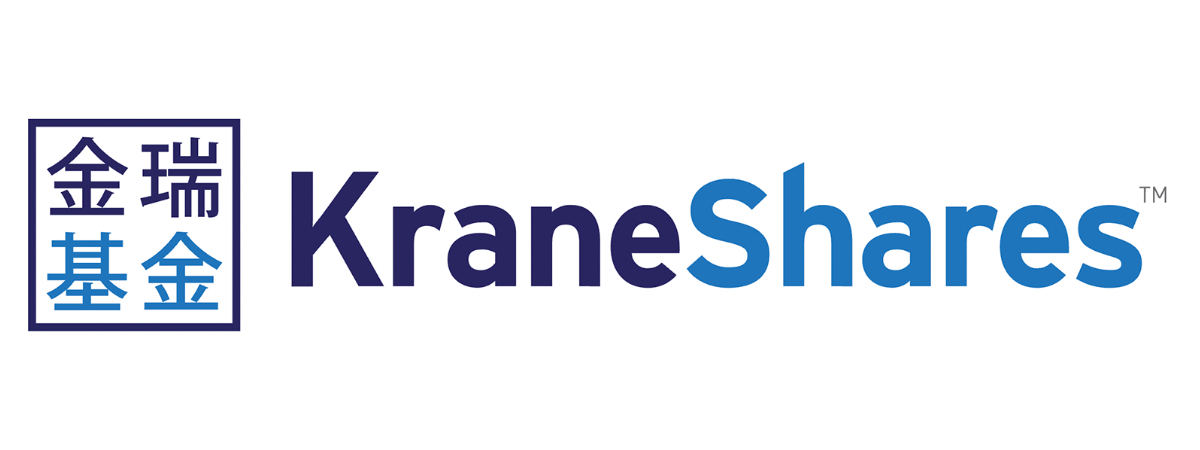How the carbon emissions credits and carbon offset markets work and how to invest in them.
Analyzing Carbon Investing
Chances are, you’ve heard about carbon investing—but what exactly is it?
It’s easy to become confused when investigating new, juicy topics like this one, so let’s apply our investing framework to explore further. First, we need to answer the following questions:
Investing Framework
- What is it?
- Is it investing, speculating or gambling?
- What is the expected return and risk?
- Who is on the other side of the trade?
- What is the investment vehicle?
- What does it take to be successful?
- What are the fees and who is getting them?
- How does it the impact your portfolio?
To answer the first question “What is it?” let’s dive into some background.
Why Carbon Emissions Became a Problem in the First Place
Carbon is a pretty broad term to describe carbon dioxide (CO2) and other greenhouse gas emissions. These emissions build up in the atmosphere and lead to climate change. This buildup is an alarming issue, especially when the atmospheric concentration of CO2 has climbed 48.0% since the pre-industrial era.
Not only is air quality deteriorating, but the resulting higher temperatures are becoming more noticeable. We’ve seen the ten hottest years in history since 2005.
So what are we doing to solve this?
The Paris Agreement was born in 2015 with the goal of reducing global warming to pre-industrial temperatures. To do this, we need to be emitting at least 8.0% less carbon dioxide per year than we are. That’s a big task, which encourages national and regional governments—as well as corporations and businesses—to incentivize CO2 reductions.
Mandated vs. Voluntary CO2 Reductions
In addition to the Paris Agreement, there are now mandatory reductions and voluntary reductions. Let’s take a look at both of these and their investment opportunities.
Mandatory vs. Voluntary Carbon Emmissions Reductions
Mandatory Reductions
- Seen at the national or regional levels
- Incentivized by governments
- Utilize a cap and trade mechanism such as the EU’s Emissions Trading System
- Active futures market for trading carbon emissions allowances
- Can be invested in via ETFs
Voluntary Reductions
- Companies pledging to achieve a carbon net-zero position.
- Incentivized by stakeholders, investors, employees, and customers.
- Pledged in different “scopes” (commitment levels).
- Failure to achieve pledges is atoned for by purchasing carbon credits.
- Immature futures market
- No ETFs available for investment
The Cap and Trade Emission Trading Systems
The first ETS grew out of the European Union’s need to reverse pollution. Their target is to reduce greenhouse gas emissions to at least 55.0% below the 1990 levels by 2030. A large goal! The EU ETS (established in 2005) sparked others to establish similar systems—including regional reductions in New England and California.
But how do these emission trading systems work? It’s called the cap and trade principle. Let’s use the EU ETS as our example:
The EU sets a “cap” on the amount of emissions (pollution) that the industrial sector can emit. As emission usage lessens, the EU moves the cap down. Those that exceed their allowed usage are fined.
There are two options for companies: reduce their emissions on their own or buy carbon credits.
Carbon credits are allowances that can be purchased from companies that went over and above in their emission reduction. Because one company reduced more than necessary—another company can purchase the “difference” to cover their inability to meet the current standard.
Futures contracts are created with these allowances—or credits—as well. Companies can enter into a contract with each other to sell and buy carbon credits at a later date. These futures contracts are what ETFs, like the Kraneshares Global Carbon ETF (KRBN).
Which makes for an interesting investment market.
Why?
Well, the supply of these allowances is controlled by the EU ETS marketplace, which means the price is directly influenced by it. Price too low? The marketplace simply reduces the number of given credits. Problem solved.
The interesting part is that anyone—individuals, investors, companies, hedge funds—can invest in this carbon futures market by investing in ETFs that purchase the futures contracts. The futures contract for EU ETS is known as the European Union Allowances or EUA. The existence of the EUA futures market has led to some controversy.
Speculation by outside investors could negatively affect the original goal of the ETS—to reduce pollution—by influencing the futures’ price to reflect speculative decisions instead of marketplace decisions.
Conversely, outside investors create liquidity in the market, potentially making the price more accurate—instead of allowing only the EU to influence the price through its supply.
It’s unclear whether investing in mandatory reduction-driven ETFs is a good investment. Futures contracts only produce a profit if the price at the time the futures contract matures is greater than the futures price when the contract was entered into.
In 2021, the price of the European Union Allowances future contract nearly doubled in response to an announcement by the European Union that it wanted to expand emissions caps to additional industries.
With the EUA priced at close to 60 Euros, speculators in these futures will need to see a EUA price higher than that in order to earn a profit.
It’s a speculation. You just don’t know.
The Voluntary Side of Things—A Long-Term Horizon
On the other side, there are voluntary reductions. This is where companies pledge—on one of three scopes (or levels)—to reduce their carbon footprint until it’s at a carbon net-zero position.
What this means:
– Scope 1: Influencing the greenhouse emissions associated with their factories, vehicles, machinery, etc. The most popular commitment.
– Scope 2: Influencing the greenhouse emissions associated with their electricity and heat sources. Often pledged along with the first scope.
– Scope 3: Influencing the indirect results of their business—how employees travel to get to work, how their products are used after they are purchased, etc.
It seems like a lot of work—especially when there isn’t a regulation authority breathing down their neck. So why do companies voluntarily reduce their pollution?
Stakeholders. Investors. Employees. Customers.
Society, as a whole, is becoming more aware of its role in reversing pollution. Stakeholders want to know if companies can meet industry standards in a few decades. They need confirmation that everything will be okay, that the company will act responsibly and adapt to new regulations.
How do companies ensure these voluntary pledges? They change their systems and reduce their emissions, or they buy carbon offsets.
The Wild West of Carbon Offsets
Carbon offsets = one metric ton of reduced or avoided carbon emissions.
The Economist compared purchasing carbon offsets to the medieval populace purchasing indulgences from the Catholic Church to atone for their sins. Purchasing carbon offsets doesn’t actually enforce the company buying them to make any changes to their carbon emissions.
The sinner gets to keep on sinning.
There are two types of carbon offsets:
– Avoidance Offsets: a contractual agreement registered with an exchange that avoids pollution in the first place. Example: paying landowners to not cut down trees or incentivizing farmers to not turn grasslands into crops.
– Removal Offsets: taking carbon out of the atmosphere. Example: Reforestation.
So how do you invest in the voluntary sector of carbon offsets?
The carbon offsets market is created by suppliers that bundle projects together. They buy the offsets and tailor the bundle to the buyer. These suppliers are brokers, registries, and organizations.
There isn’t a whole lot of regulation in the carbon offsets market. Sometimes, anything goes, and the project may or may not be ensured or enforced in the long-run.
The price of these projects is driven by demand. Right now, you will see low prices because there are a lot of projects available. As pressure from stakeholders and society increases, there will be more demand for these projects, which will raise the price. If projects become more expensive, companies may actually take steps to reduce their emissions instead of relying on projects and carbon credits.
It’s not very easy to invest in the voluntary emissions reductions market right now. There’s no organized ETF, and these projects aren’t commoditized yet.
There are—however—some offset futures options.
What Are You Buying and Selling With a Futures Contract?
The Chicago Mercantile Exchange (CME) launched two offset futures contracts:
Chicago Mercantile Exchange Futures Contract
CBL Global Emissions Offset Futures
- Launched this year
- Is registered with three different registries
- Trades on an exchange (so far only a 3.75% profit)
- Participation is low
Nature-Based Global Emissions Offset Futures
- Will launch later this year
- Registered
- Focused on agricultural projects
There are no ETFs in the voluntary reductions market. Not yet at least.
Again, you can invest in the voluntary offset futures market, but there’s no historical evidence that they will do well or how this market will behave.
The Options: Speculation vs. Speculation
Carbon investing is a new horizon—one that we will learn more about as it unfolds.
In the mandatory reductions world, there’s a more established and government-driven market with ETFs.
In the voluntary reduction world, it’s still a bit of a free-for-all. We’ll see how it develops with more established market options.
The main idea is that we’ll make money if the carbon credits are worth more than the current futures price (what a future was contracted for). There are lots of players in the game: stakeholders, governments, and us. It is fascinating that we can make a difference in this new market by raising demand for these projects.
But again, we don’t know what the return is. It’s new! We’ll continue exploring this topic, but for now—it’s all speculation.

Emily Boulter is a professional writer with a B.A. in English & Writing from Regent University. With experience in show notes writing, grant writing, and business writing, she has a deep passion for helping others through her writing and non-profit initiatives. Emily lives in the Rocky Mountains of Colorado and can easily be found hiking, horseback riding, or reading in one of the local coffee shops.

David Stein is the founder of Money for the Rest of Us. Since 2014, he has produced and hosted the Money for the Rest of Us investing podcast. The podcast reaches tens of thousands of listeners per episode and has been nominated for ten Plutus Awards and won one. David also leads Money for the Rest of Us Plus, a premium investment education platform that provides professional-grade portfolio tools and training to over 1,000 individual investors. He is the author of Money for the Rest of Us: 10 Questions to Master Successful Investing, which was published by McGraw-Hill. Previously, David spent over a decade as an institutional investment advisor and portfolio manager. He was a managing partner at FEG Investment Advisors, a $15 billion investment advisory firm. At FEG, David served as Chief Investment Strategist and Chief Portfolio Strategist.
Podcast Episode 351: How to Profit From Carbon Investing While Combatting Climate Change
How the carbon emissions allowance and carbon offset markets are structured and how to invest in them.

Topics covered include:
- How much greater are the levels of carbon dioxide in the atmosphere and how much have average temperatures increased
- Why industries and companies are seeking to cut their greenhouse gas emissions
- How cap and trade emissions trading systems work
- What are the demand and supply dynamics of tradable emission allowances
- What has been the performance of tradeable emission allowances
- How ETFs invest in tradable emission allowances
- How the voluntary carbon offset market is structured and what are the demand and supply dynamics
- Why doe companies make voluntary pledges to reduce their carbon footprints
- What are the types of carbon offset projects
- Why it is more difficult to invest in carbon offset markets and how that is changing
Show Notes
Vital Signs: Carbon Dioxide—Nasa
Global Energy Perspective 2021—McKinsey & Company
Climate Change: Global Temperature by Rebecca Lindsey and LuAnn Dahlman—NOAA
2030 Climate Target Plan—European Commission
FAQs Carbon Markets & Indices—Intercontinental Exchange, Inc.
Carbon trading: the ‘one-way’ bet for hedge funds by David Sheppard—Financial Times
KRBN KraneShares Global Carbon ETF—Krane Shares
The Regional Greenhouse Gas Initiative, Inc.
Carbon offset prices set to increase tenfold by 2030 by Michael Holder—GreenBiz
Carbon offsetting is essential to tackling climate change—The Economist
Future Demand, Supply and Prices for Voluntary Carbon Credits – Keeping the Balance—Trove Research
CBL Global Emissions Offset Futures – Constract Specs—CME Group
Episode Sponsors
The Money For the Rest of Us podcast is ad-supported, but you can support the show and listen to episodes ad-free by becoming a subscriber. Learn about subscribing here.
Related Episodes
251: Impact Investing and Intentionality
262: Better Not Bigger, Circular Not Linear – How the Global Economy Is Changing
340: Climate Change, ESG, and What Should Investors Do?
366: Is There A Global Energy Crisis?
384: Has a Commodities Bull Market Supercycle Started? If So, How Do You Invest in It?
436: Revisiting Carbon, SPACs, Silver, Convertible Bonds, and Frontier Markets
Transcript
As a Money For the Rest of Us Plus member, you are able to listen to the podcast in an ad-free format and have access to the written transcript for each week’s episode. For listeners with hearing or other impairments that would like access to transcripts please send an email to jd@moneyfortherestofus.com Learn More About Plus Membership »

